This post may contain affiliate links. Please read our disclosure policy.
Taiwanese cold sesame noodles are a delightful and refreshing dish perfect for a quick and easy meal. With a creamy sesame sauce, chewy noodles, and a touch of spice, this dish is packed with flavor and texture. It’s perfect for hot days when you crave something light yet satisfying.
If you love this recipe, you’ll also enjoy Taiwanese cold peanut noodles. Similar in preparation, these noodles offer a different flavor profile with a rich peanut sauce. Together, these dishes provide a variety of delicious options for your meal planning.
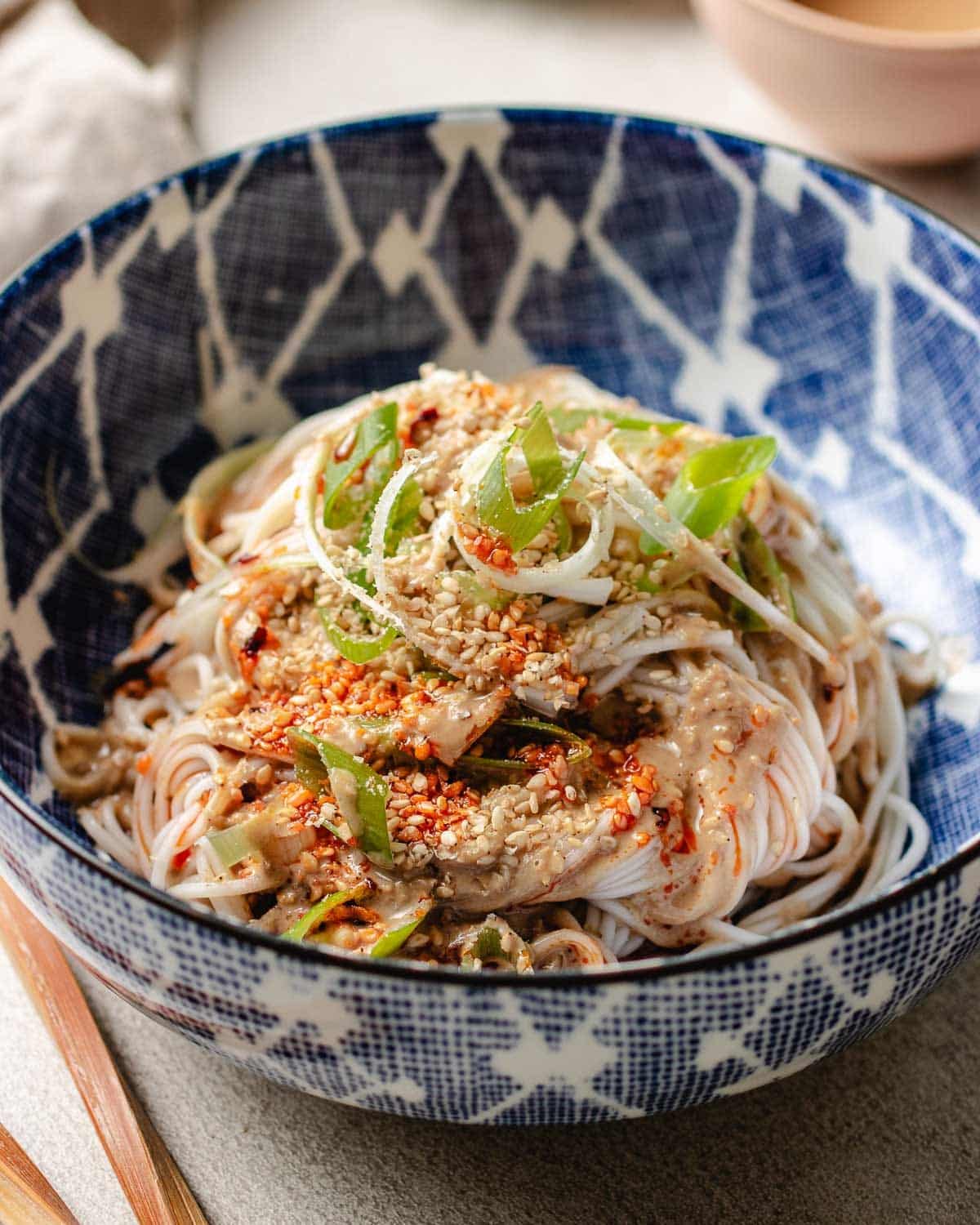
Table of Contents
Ingredients
Here are the ingredients you’ll need to make these yummy cold noodles and sesame sauce. Each ingredient adds a special flavor or texture to make this dish delicious.
- Rice or thin wheat noodles: Provides a chewy texture and serves as the base for the dish.
- Toasted sesame seeds: Adds a nutty flavor and a slight crunch for garnish.
- Scallion
- Garlic chili sauce (optional): Adds a spicy kick and enhances the overall flavor.
Cold Sesame Noodle Sauce
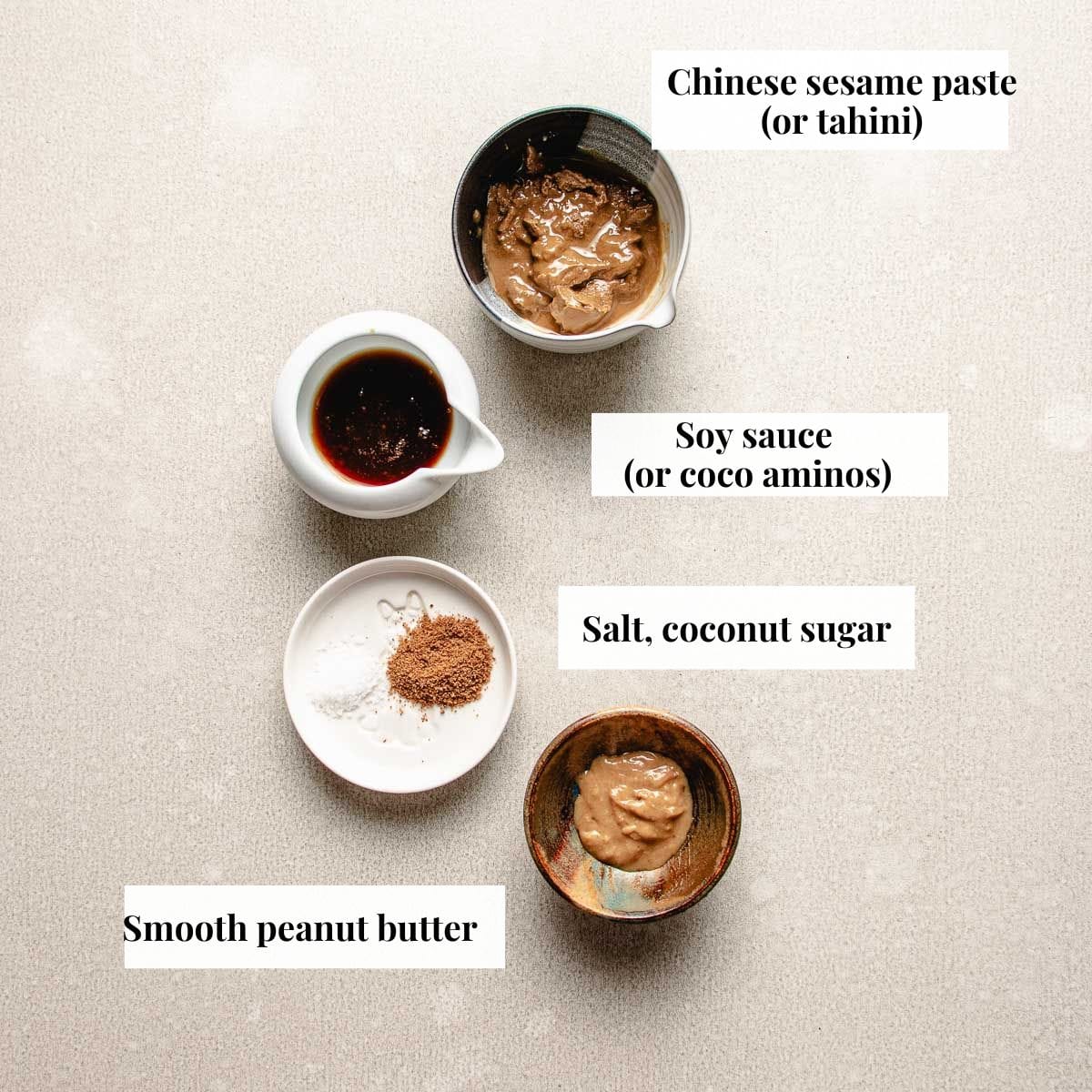
Save This Recipe
- Chinese sesame paste or tahini: Creates a rich, creamy base with a deep sesame flavor.
- Taiwanese soy sauce paste or (vegetarian) oyster sauce: Adds umami depth and a slightly sweet taste.
- Peanut butter: Provides a smooth, nutty flavor and creamy texture.
- Toasted sesame oil: Enhances the sesame flavor and adds a toasty aroma.
- Coarse sea salt
- Coconut brown sugar (optional): Adds a hint of sweetness to balance the savory elements.
- Water: Thins the sauce to the perfect creamy consistency.
Taiwanese thick soy sauce: Also known as Taiwanese soy paste, it’s like oyster sauce but without any seafood. Made with soy sauce, glutinous rice flour, sugar, and salt, it has a savory and sweet flavor. Stay tuned for my homemade version to come and this store-bought version is my favorite and it’s gluten-free.
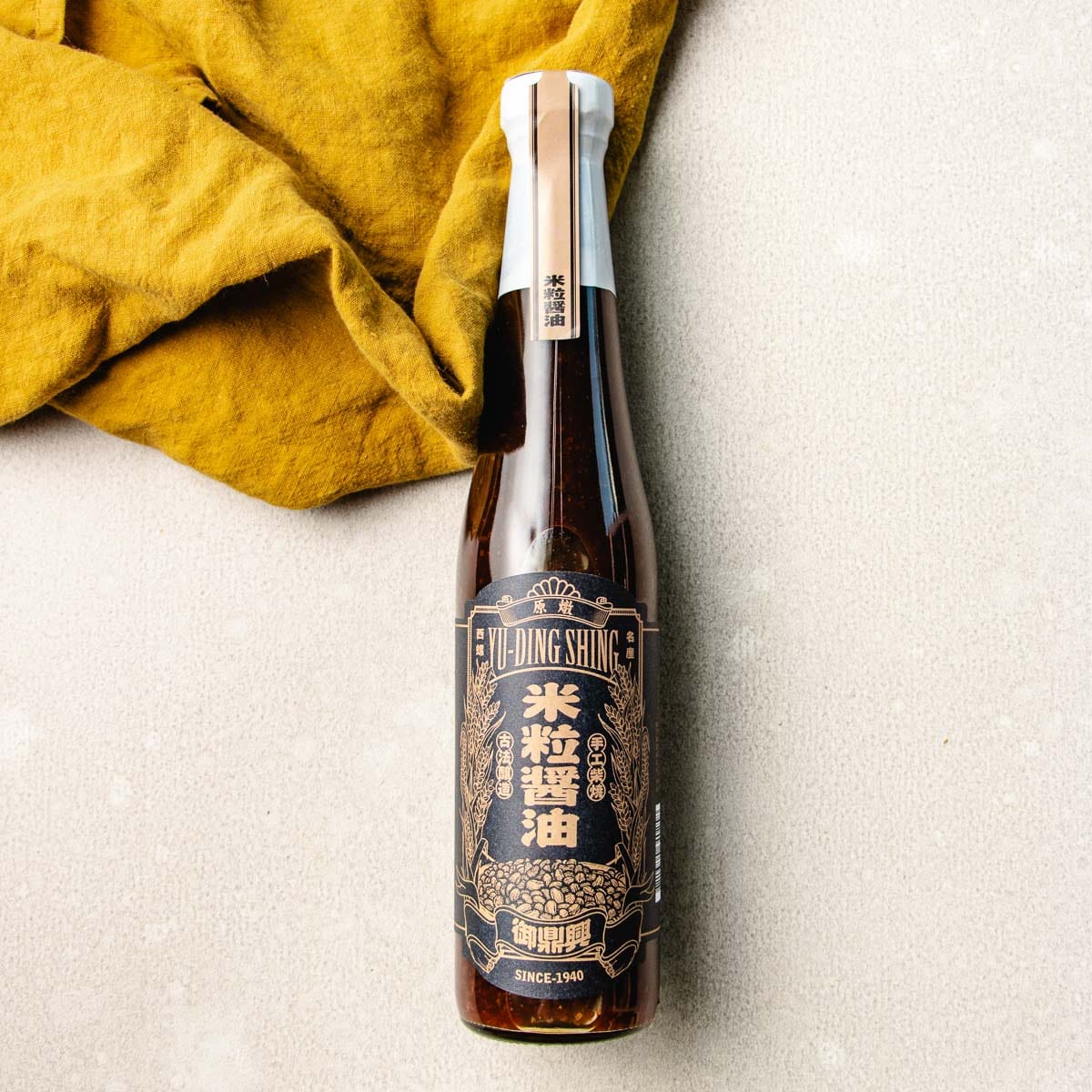
What noodles to use
- Traditionally, cold noodles use thin wheat noodles like La Mian (hand-pulled noodles).
- For gluten-free options, try thin, round-shaped rice noodles or soba noodles like my Cold noodle salad.
- For a low-carb choice, use kelp noodles or shirataki noodles.
Variations
- Topping ideas: Add sliced ham, julienned carrots and cucumbers, air fryer poached eggs, or air fryer fried eggs.
- Sauce flavors: Enhance the sauce with a small clove of grated garlic, fresh ginger, and a dash of Chinese black vinegar (or aged balsamic), or rice vinegar.
How to make cold sesame noodles Taiwanese style
Cooking cold noodles with sesame sauce is quick and easy, perfect for a refreshing meal. Here’s how to prepare this flavorful dish step by step:
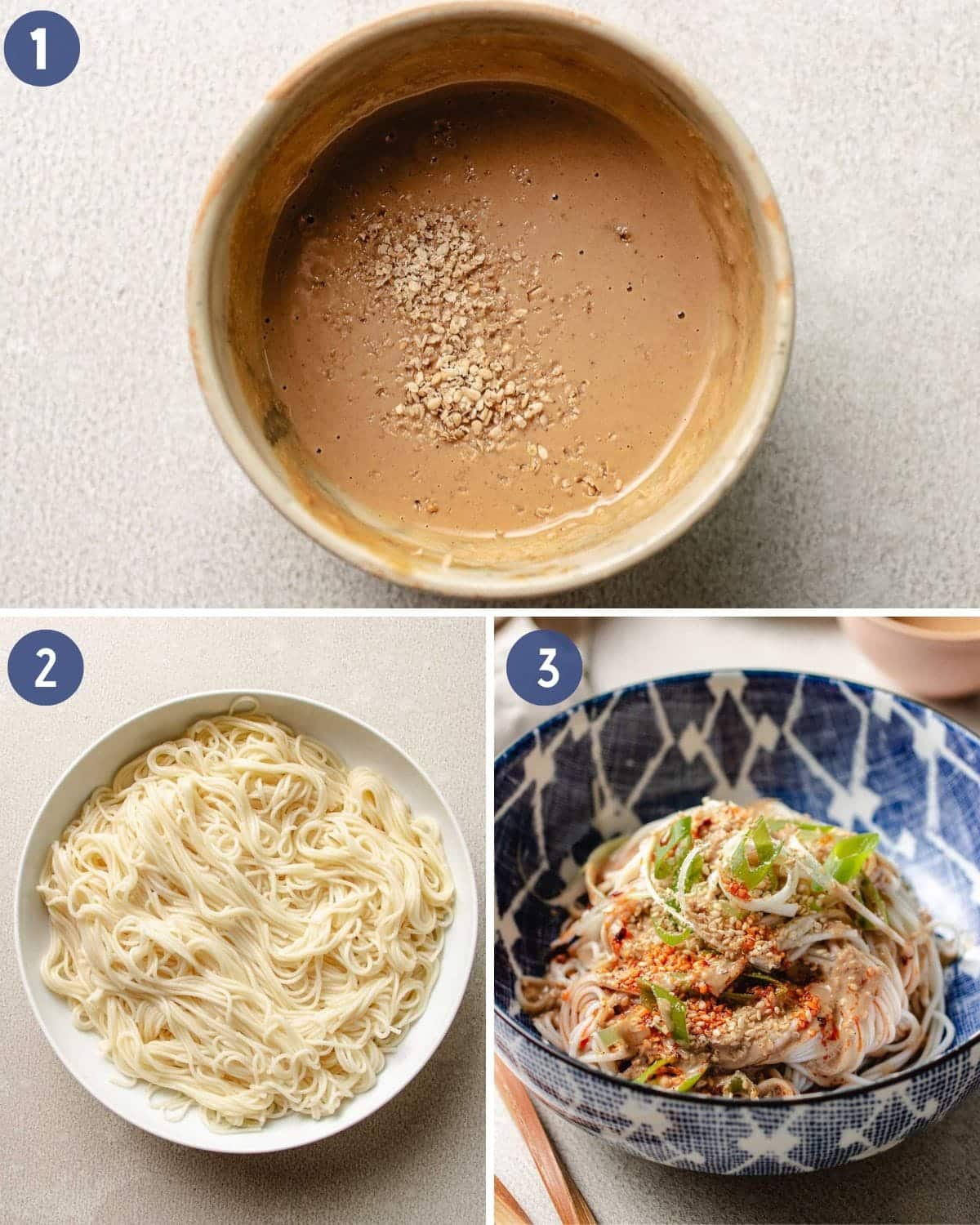
- Boil the Noodles: Bring a large pot of water to a boil and cook the noodles as instructed. Rinse in cold water, drain, then toss with a bit of oil to prevent sticking.
- Prepare the Sesame Sauce: Grind toasted sesame seeds. Mix with Chinese sesame paste (or tahini), soy sauce paste (or vegetarian oyster sauce), peanut butter, toasted sesame oil, sea salt, coconut brown sugar (optional), and water. Stir until creamy and smooth.
- Assemble the Dish: Divide the noodles into two bowls, drizzle with sesame sauce, and garnish with sesame seeds and scallions. Add garlic chili sauce for a spicy kick if desired.
Chinese sesame paste vs. Tahini
Chinese sesame paste is made from darkly roasted sesame seeds, giving it a darker color and a nuttier, less bitter flavor. Tahini, also a sesame paste, can be made from either roasted or raw sesame seeds. It has a lighter color with an earthy and slightly bitter taste.
Chinese sesame paste substitute
You can find Chinese sesame paste at local Chinese grocery stores or online. If you need a substitute, use tahini mixed with peanut butter and a touch of toasted sesame oil, as written in the recipe, to achieve a similar flavor profile.
Make ahead and noodle storage
Make-Ahead: You can prepare the sesame sauce up to a week in advance and store it in the refrigerator. Thin it with a little water or toasted sesame oil before using. If needed, you can also boil the noodles 1-2 days ahead and store the noodles and sauce separately.
Noodles: After refrigeration, boiled noodles may harden and stick together. To soften and untangle them, rinse the noodles in warm water and shake off any excess moisture before combining the cold noodles with sesame sauce.
What to serve with sesame cold noodles
Pairing your cold Asian noodles with the right sides and proteins can turn a simple meal into a delightful feast. Here are some perfect accompaniments:
Vegetable Sides:
- Add a crunchy and tangy touch with Vegan kimchi.
- Enjoy the refreshing flavor of Asian pickled cucumbers.
- Try Cucumber roll ups (with ham and avocado) for a light and tasty side.
Vegetarian Proteins:
- Pair with a creamy and refreshing Silken tofu salad.
- For a crispy and flavorful addition, serve Salt and pepper tofu air fryer.
Taiwanese Favorites:
- Delight in the savory and crispy Taiwanese popcorn chicken.
- Enjoy the juicy and flavorful Taiwanese fried chicken cutlets.
Helpful tips
- Rinse the boiled noodles in cold water to remove excess starch and maintain the QQ (chewy) texture.
- Shake the noodles dry to remove excess water before placing them into a bowl to prevent them from becoming soggy.
- Mix the noodles with a little oil after boiling to prevent them from sticking together.
- Adjust the sauce consistency by gradually adding water until it’s creamy and smooth, not too thick or too runny.
- Rinse refrigerated noodles in warm water to soften them and shake off any excess moisture before adding the sauce.
FAQs
You can use tahini mixed with peanut butter and a touch of toasted sesame oil to achieve a similar flavor profile.
Absolutely! See our Chinese pantry staples for gluten-free Chinese seasonings.
While it’s traditionally served cold, you can serve it warm by not rinsing the noodles in cold water and thinning the sesame sauce with warm water
More Asian noodles recipes you might like
Looking for more delicious noodle dishes? Here are some flavorful options that are sure to satisfy your cravings and keep you exploring more tasty recipes on our blog.
- Spicy Peanut Noodles: A simple and easy Chinese dish with a spicy peanut sauce.
- Garlic Chili Noodles: Readers’ favorite! Made with my homemade chili garlic sauce.
- Gochujang Pasta: An east meets west Asian pasta dish with sweet and spicy gochujang sauce.
- Shirataki Noodles with Peanut Sauce: Simple, low-carb, and no-cook deliciousness!
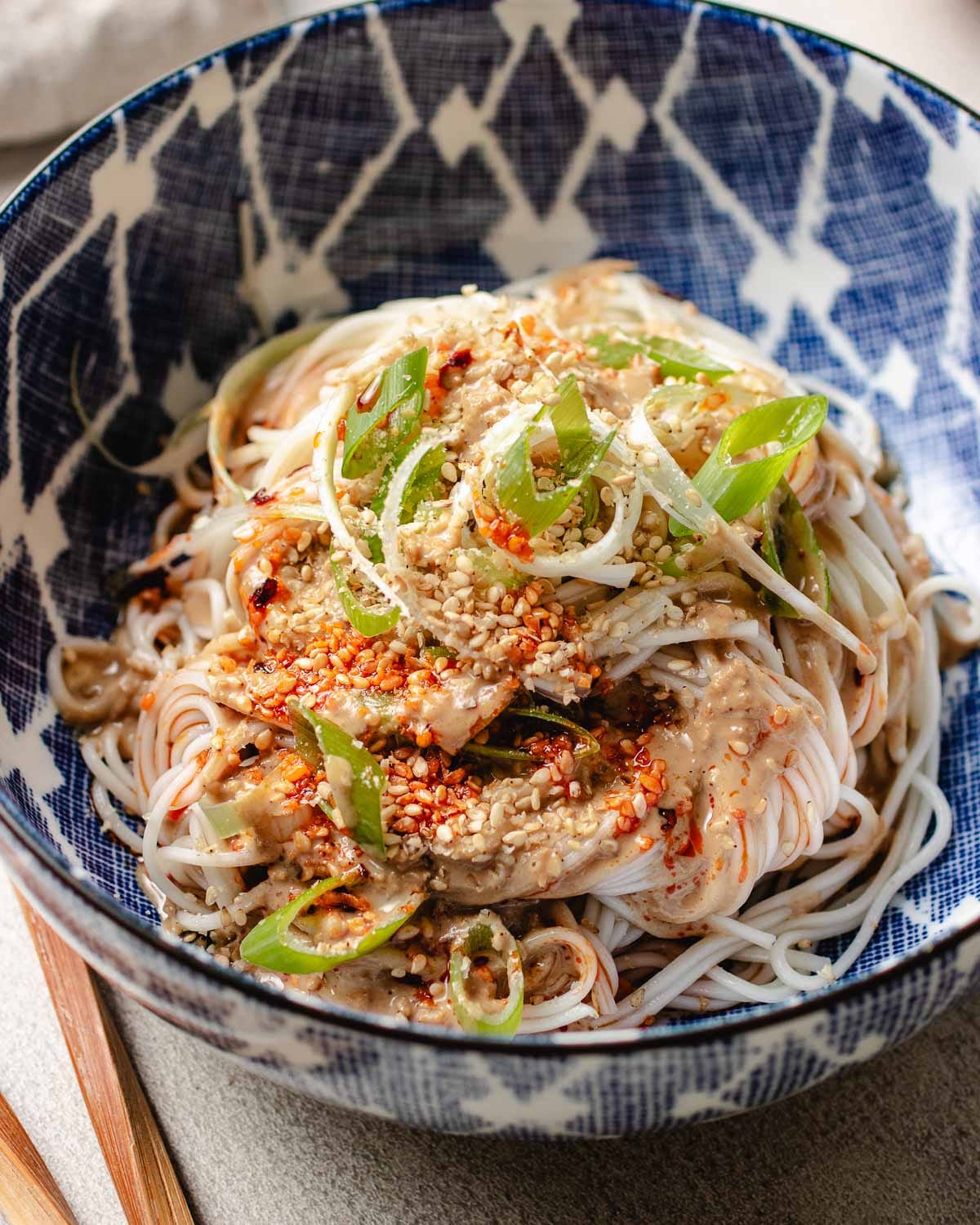
Taiwanese cold sesame noodles recipe
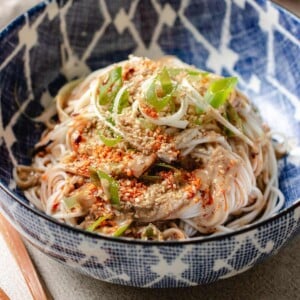
Video
Ingredients
- 100 gram rice noodles 2 bundles
- 1 tbsp Toasted sesame seeds (hand-grinded before garnish and serving)
- 2 bulb scallion thin sliced on diagonal
- 2 tsp garlic chili sauce optional
Cold sesame noodle sauce:
- 2 tbsp Chinese sesame paste or tahini (not raw tahini)
- 1 tbsp Taiwanese soy sauce paste or (vegetarian) oyster sauce
- 2 tsp peanut butter unsalted
- 1 tsp toasted sesame oil
- ¼ tsp coarse sea salt
- ½ tsp coconut brown sugar optional
- Water to thin room temperature, for reference, I used 3-4 tbsp water
Instructions
- Bring a large pot of water to boil.
Sauce preparations:
- In the meantime, grind the toasted sesame seeds to release the aroma.
- Transfer the sesame seeds to a mixing cup and combine with ingredients from sesame paste to water. The consistency should be creamy and smooth that’s not too thick or too runny.
Boil noodles:
- To boil the noodles, follow the package instructions and rinse them in cold water and shake away excess water. Place them on a large serving plate and toss with a few teaspoons of oil to prevent them from sticking.
Serving:
- Divide the noodles into two serving bowls. Drizzle the sesame sauce over. Garnish with sesame seeds and scallion. Serve at room temperature.
Notes
- Make-ahead: The sauce can be made a week ahead, stored in the fridge. Thin with a little water or toasted sesame oil before using.
- Noodles: If you have to boil the noodles ahead, the noodles should last 1-2 days in the fridge. To warm up the noodles and loosen the strains, rinse them in warm water and shake away excess moisture before combining with the cold sesame noodle sauce.
- Taiwanese thick soy sauce: Also known as Taiwanese soy paste, it’s like oyster sauce but without any seafood. Made with soy sauce, glutinous rice flour, sugar, and salt, it has a savory and sweet flavor. Stay tuned for my homemade version and this store-bought version is my favorite and it’s gluten-free.
Nutrition
Nutrition information is automatically calculated, so should only be used as an approximation.
Made a dish and loved it? Please remember to rate the recipe and leave a comment in the section below! It helps my blog grow organically, allowing me to continue sharing free and awesome content with you. Thank you!
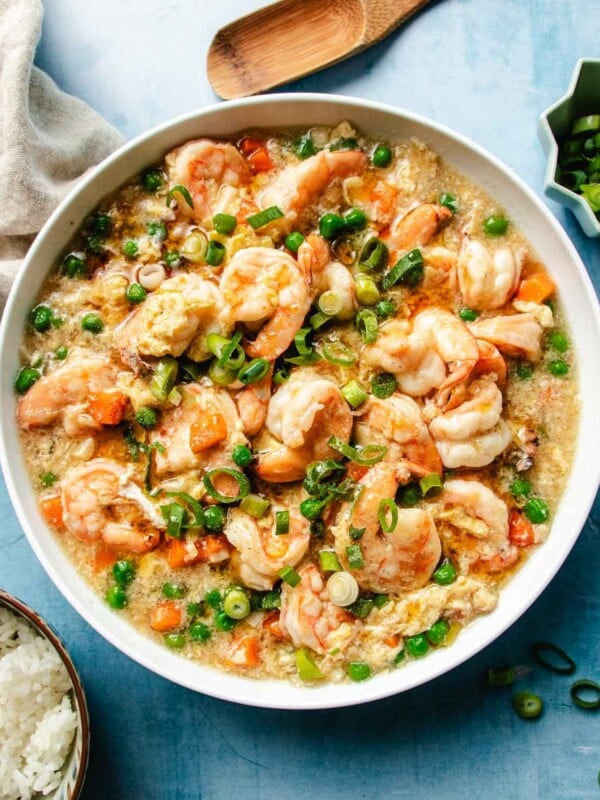
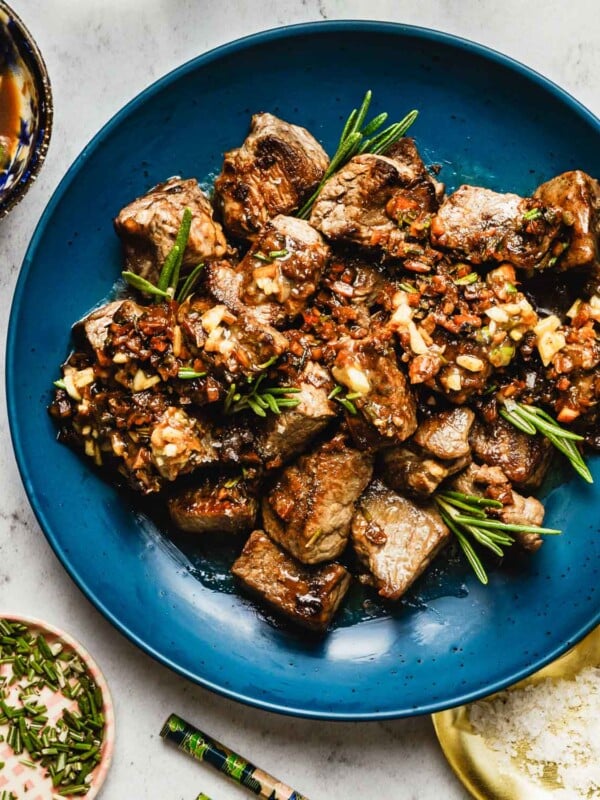
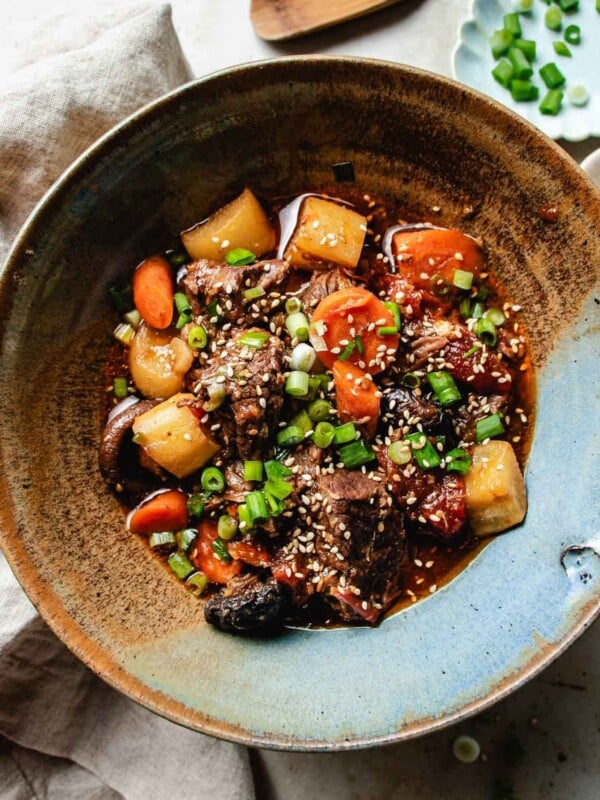
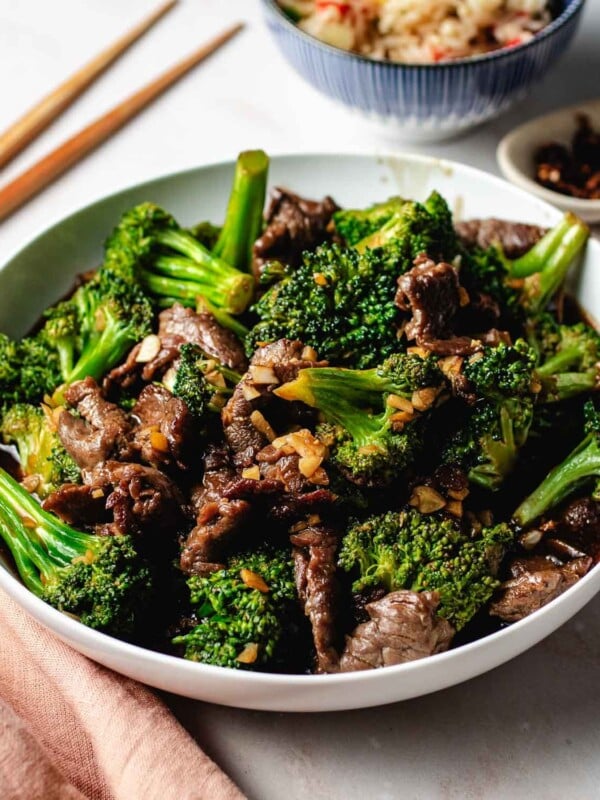
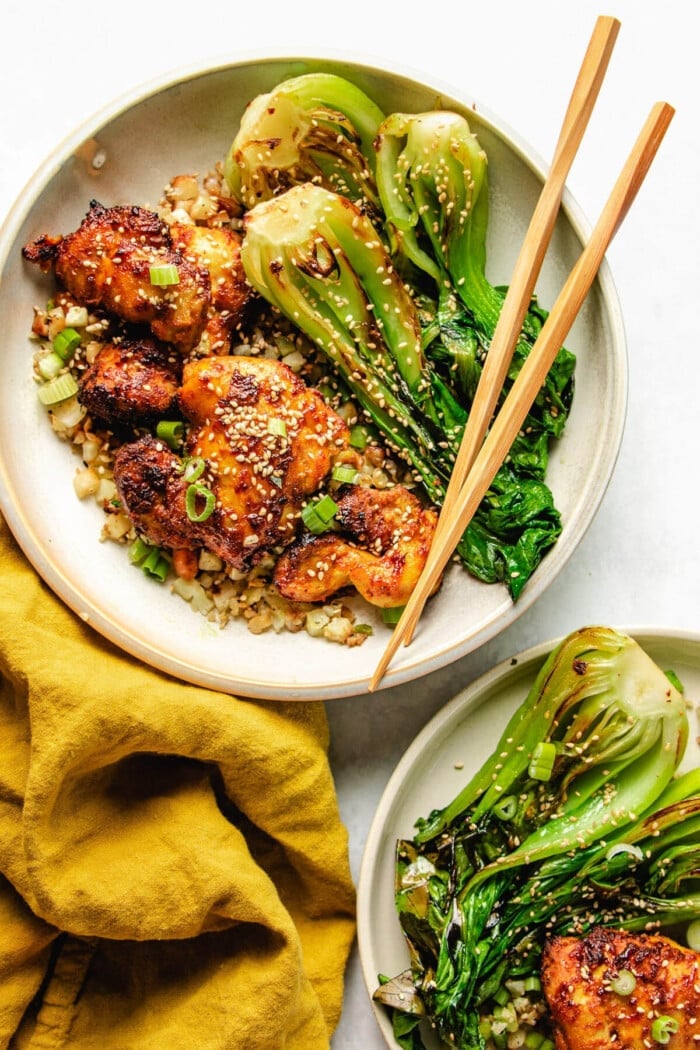








I brought it to a summer cookout this past week and it was a hit with everyone! I cooked the noodles and packed the sauce separately. I tossed the noodles with some light neutral oil to prevent them from getting too sticky. The sauce just needs a little more water to thin before combining the two. This is a great one for hot days!
Wonderful!